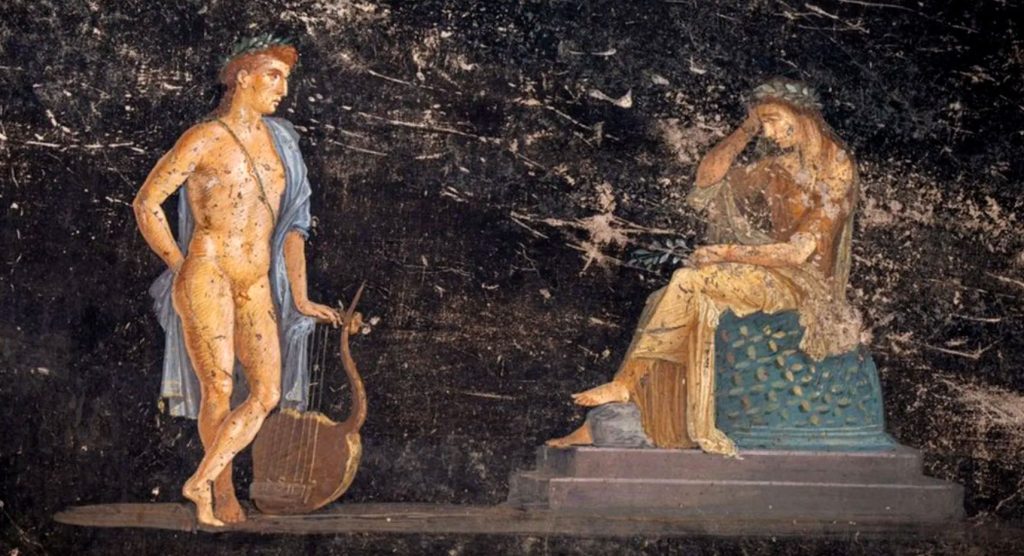In the ancient city of Pompeii, preserved for centuries under volcanic ash, archaeologists have uncovered a series of vivid frescoes that offer a rare glimpse into the culinary world of the Romans. Discovered in 2023, these paintings – found in both humble street-side eateries and luxurious private homes – reveal fascinating details about what Romans ate, how they dined, and the role food played in their society.


Marcus Cyron assumed (based on copyright claims). – No machine-readable source provided. Own work assumed (based on copyright claims)., CC BY-SA 3.0, https://commons.wikimedia.org/w/index.php?curid=673129
The Thermopolium: A Window into Everyday Meals
Among the most striking finds is a fresco from a thermopolium, a type of Roman snack bar where workers and travelers could grab quick, affordable meals. The painting, remarkably preserved, depicts clay jars (dolia) filled with staples like lentils, nuts, and dried fruits. A painted countertop showcases a platter of eggs, olives, and a roasted chicken leg, suggesting these items were popular takeaway options. According to the Archaeological Park of Pompeii, such eateries were common in Roman cities, acting as social hubs for the lower and middle classes.
Banquets of the Elite
In contrast, frescoes from a nearby villa depict lavish banquets attended by Pompeii’s wealthy residents. Guests recline on couches, served by enslaved workers carrying trays of figs, pomegranates, and dates. One scene highlights a bowl of garum, a fermented fish sauce beloved by Romans and used to flavor nearly every dish. These paintings emphasize how food symbolized status: exotic imports like saffron and peppercorns, traded from distant provinces, underscored a family’s wealth and global connections.
What the Frescoes Tell Us
A 2023 study by researchers such as Dr. D’Ambrosio argues that these artworks challenge old assumptions about Roman diets. For instance, pineapples—previously thought to have arrived in Europe after the 15th century—appear in one fresco, hinting at possible trade links with Africa or Asia. The paintings also reveal the importance of communal dining, whether at a crowded thermopolium or an elite gathering. Food wasn’t just sustenance; it was a way to build relationships, negotiate business, and display power.
Why This Matters
The eruption of Mount Vesuvius in 79 CE froze Pompeii in time, but these frescoes do more than preserve ancient meals—they humanize the past. The snacks, spices, and shared meals remind us that daily life in Rome wasn’t so different from our own. As noted in The Guardian’s coverage, discoveries like these bridge the gap between modern viewers and ancient people, showing how food has always been central to culture, identity, and survival.
For those interested in exploring more about Roman society, History Learning’s resources on daily life in Rome, the role of Roman trade networks, and the social hierarchies that shaped dining customs provide deeper context. You can also learn about the architecture of Roman homes where these frescoes were displayed or how Roman medicine intersected with diet and health.
